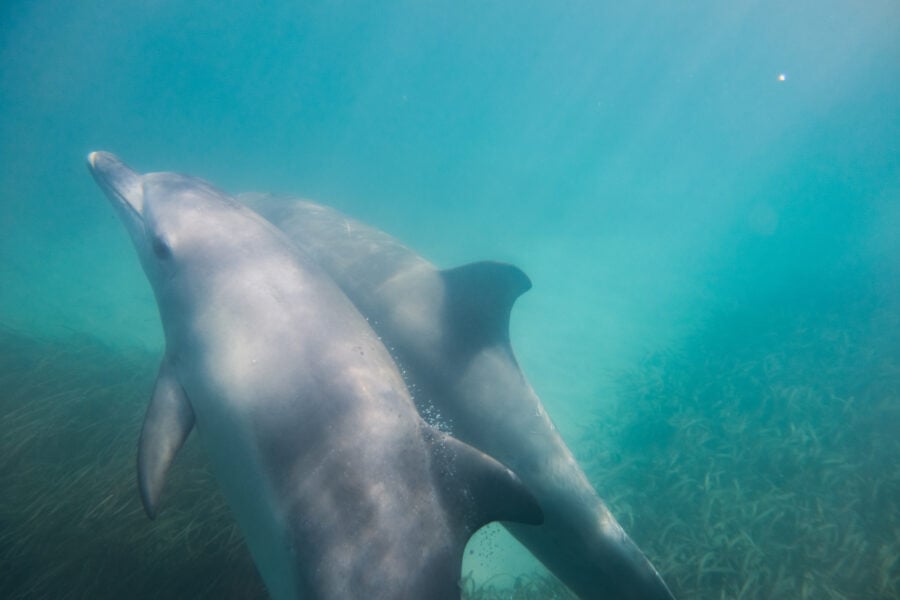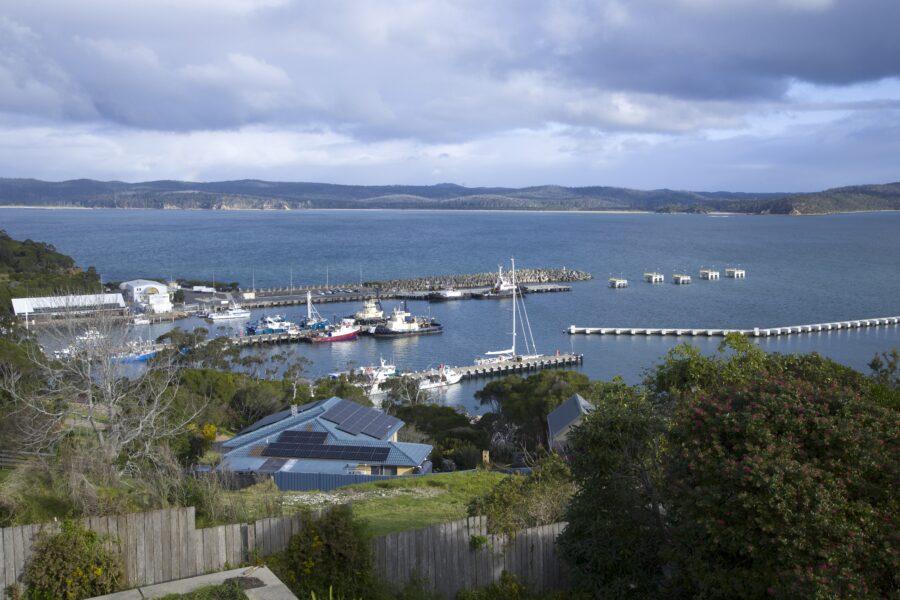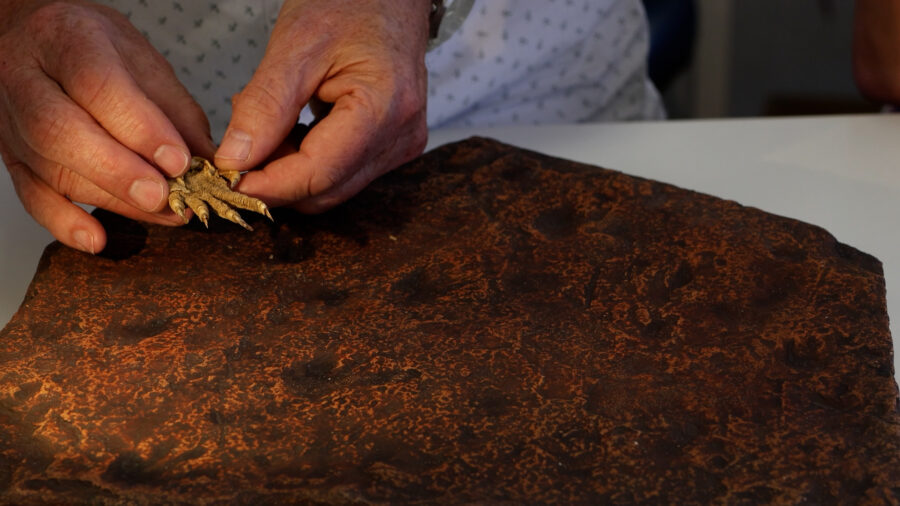Sighting of a lifetime: Night parrots found in WA
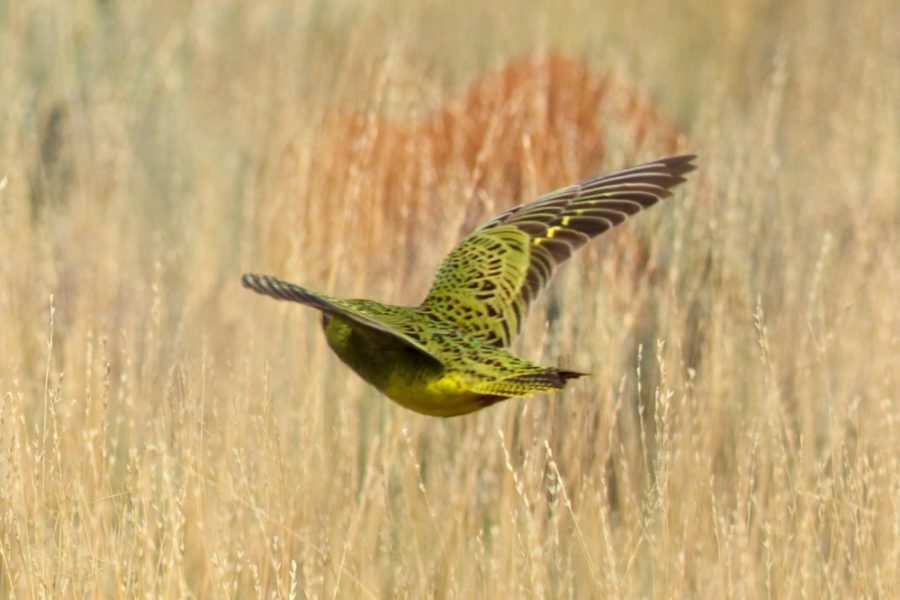
Four passionate bird watches made the discovery of a lifetime, capturing the first ever photo of a night parrot in Western Australia.
It’s a breakthrough for the critically endangered parrot, which – with no live animal seen since 1912 – was presumed extinct until 2013, when it was rediscovered in south-west Queensland by ornithologist John Young after thousands of hours in the field.
Keen twitchers Bruce Greatwich, Nigel Jackett, George Swann and Adrian Boyle were out on a nine-day bird watching trip at an undisclosed location – described as an interior salt lake system – in northern WA, when they first detected the elusive birds by call.
“We started hearing the calls early on, the first couple of nights,” Bruce said. “What we were hearing was very interesting, we knew the calls of the birds in the area, so we were excited, but cautious.
“It kept developing as the days went by, and we thought we were onto it.”
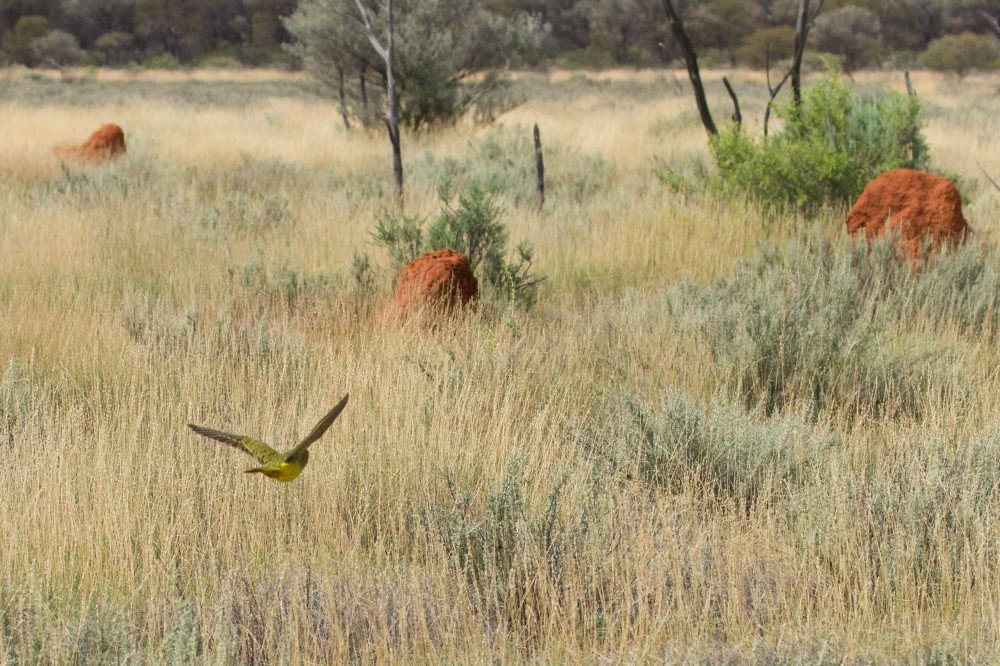
Shock discovery of a night parrot in northern WA. Until now, there was only two known populations of the night parrot left, both in Queensland. (Image: Nigel Jackett)
Later in the trip, George was out bird watching for other species, when he accidentally disturbed a parrot, and it flew out from a clump of spinifex.
He quickly alerted the rest of the group, who returned to the spot and saw it again fly out from a patch of spinifex – and while the sighting was fleeting, it was long enough to capture a photograph.
“It’s been a big rollercoaster of emotions,” Bruce said. “We were extremely elated, we knew we had achieved something quite significant –it’s still hard to grasp.”
“There was also a big sense of responsibility and we were humbled – so many people have been out looking so we felt honoured to be part of this.”
First confirmed WA sighting in over a century
Dr Steven Murphy – who led the Night Parrot Recovery Team’s research in Queensland – saw the photographs this morning.
“It’s wonderful news – absolutely magic,” said Steven, a Charles Darwin University fellow.
“It was quite clearly and obviously a night parrot flying over spinifex.”
“I don’t know if it’s because I’ve spent so much time working on them, but that pattern of green and gold, it’s just so exciting to see.”
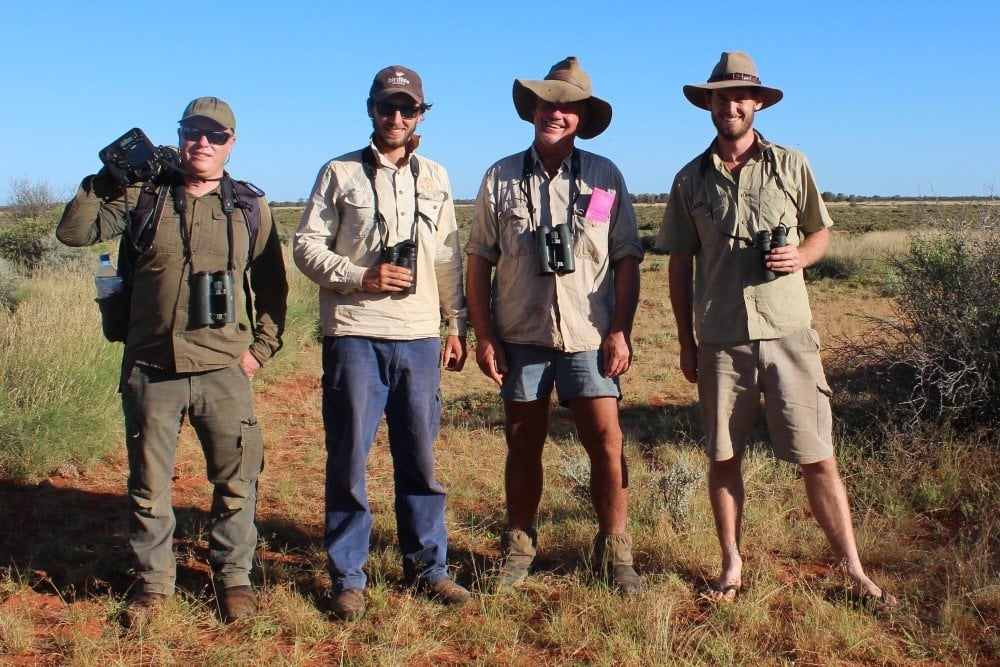
The group of bird watchers that made the amazing find. (L-R: Adrian Boyle, Nigel Jackett, George Swann, Bruce Greatwich)
Bruce and Nigel – who are based in Broome – have spent seven years looking for the nocturnal parrots in Western Australia, intrigued by the species’ century-long story.
“A few things stood out to us – the habitat described in WA was salt lake systems, and those habitats still persist, and to our knowledge, not many people had been looking there,” Bruce said.
“And then when John Young found them in Queensland, that was a huge boost to our enthusiasm, we wouldn’t be here without all of the work he did.”
Bruce said the group of birders want to extend their thanks to their family and friends who have supported them, to John Young, the Night Parrot Recovery Team who have published a lot of information and Neil Hamilton, who they have worked with on night parrot information in the past.
The future of the night parrot
The recovery team has been in touch with the WA Department of Parks and Wildlife (DPAW), and Steven said there are a lot of questions on where conservation action goes from here.
“As fantastic as the sighting is, we’ve got a lot of questions we need to try and find the answers to,” he said. “Where are they, what is the land tenure, how different are they to the Queensland population?”
“DPAW is working really hard to map out a plan of course to make sure this golden opportunity isn’t lost.”
Steven said the finding has been incredibly significant, and is essentially an insurance population, if “heaven forbid, a plague of cats wiped out the Queensland population.”
“This one encounter has changed everything,” Steven added.
Bruce said their quest to find the birds was never to get glory, but to help conserve the species, and hopes their contribution will inspire more research in WA to help protect the species.
“The promising thing is that there is a lot of that habitat out there, it just needs to be searched now,” Bruce said.
The first recording of a night parrot call was released online in February this year. (Photo and recording: Dr Steve Murphy)
READ MORE:
- First night parrot fledgling spotted in 100 years in western QLD
- Visiting the night parrot’s secret sanctuary
- Largest-known night parrot population found in Qld
- New footage of the elusive night parrot
